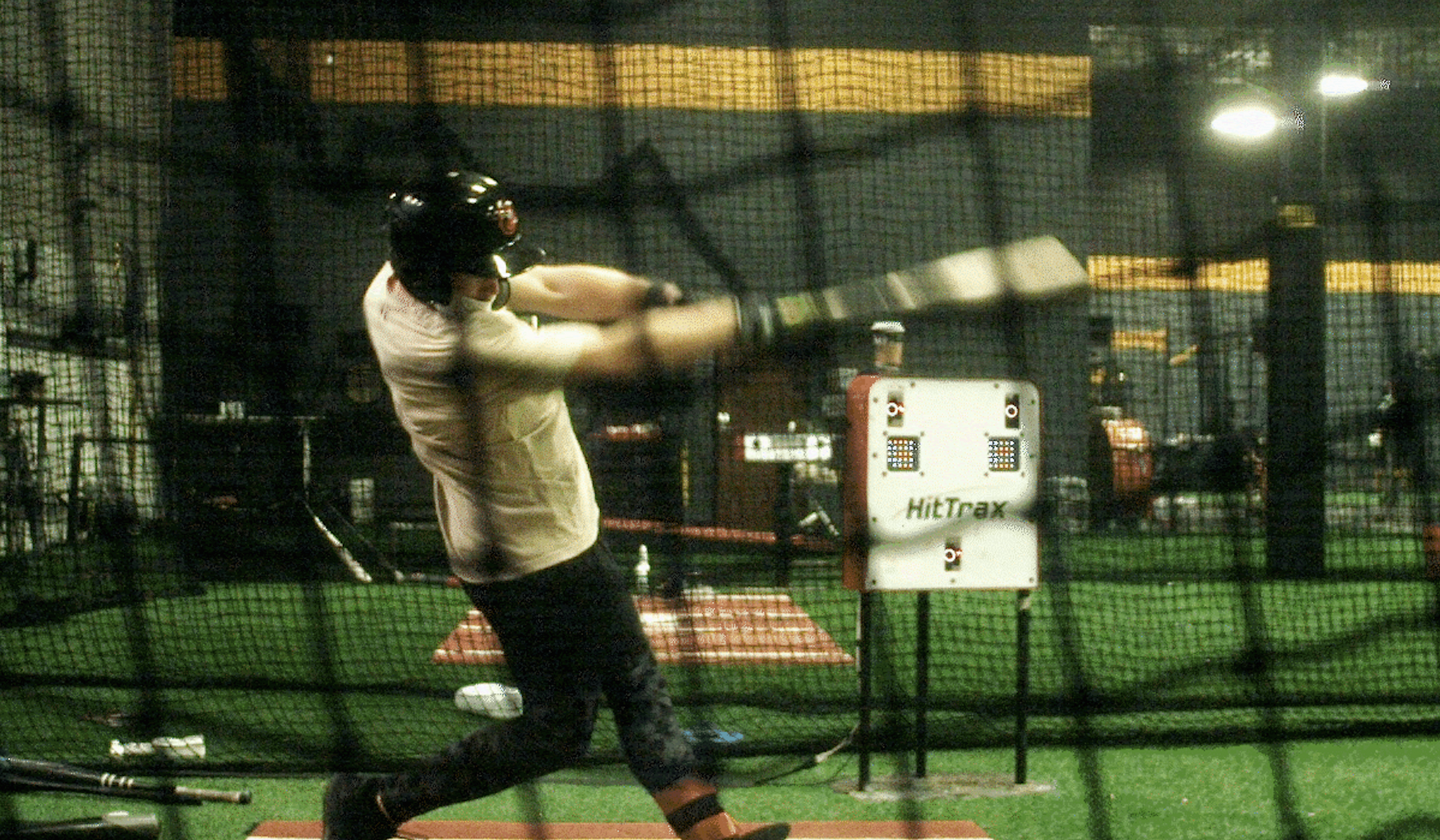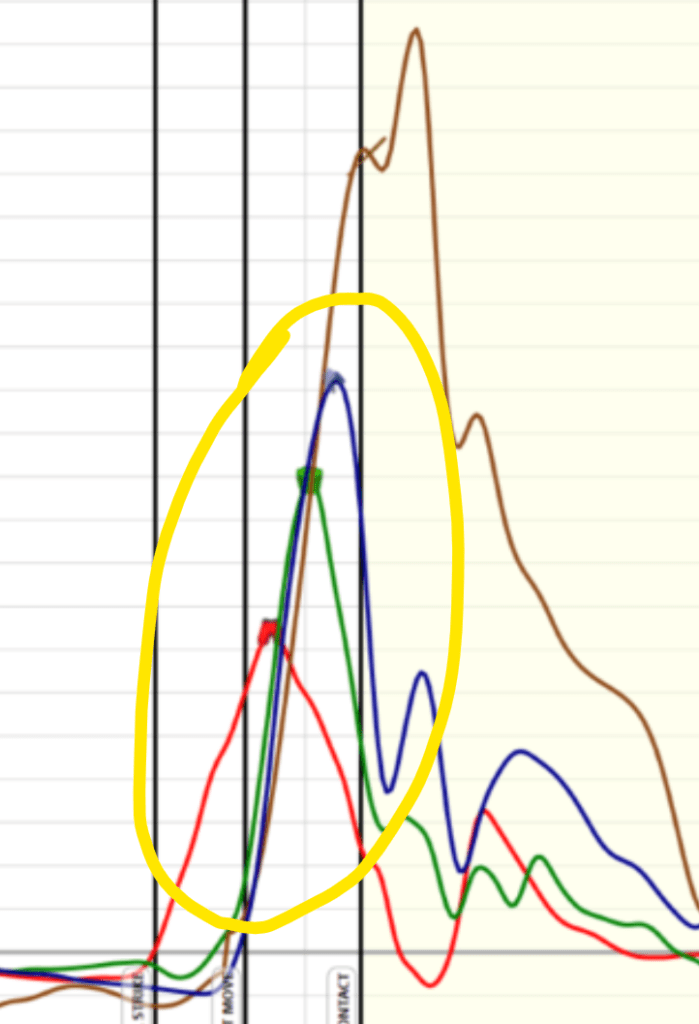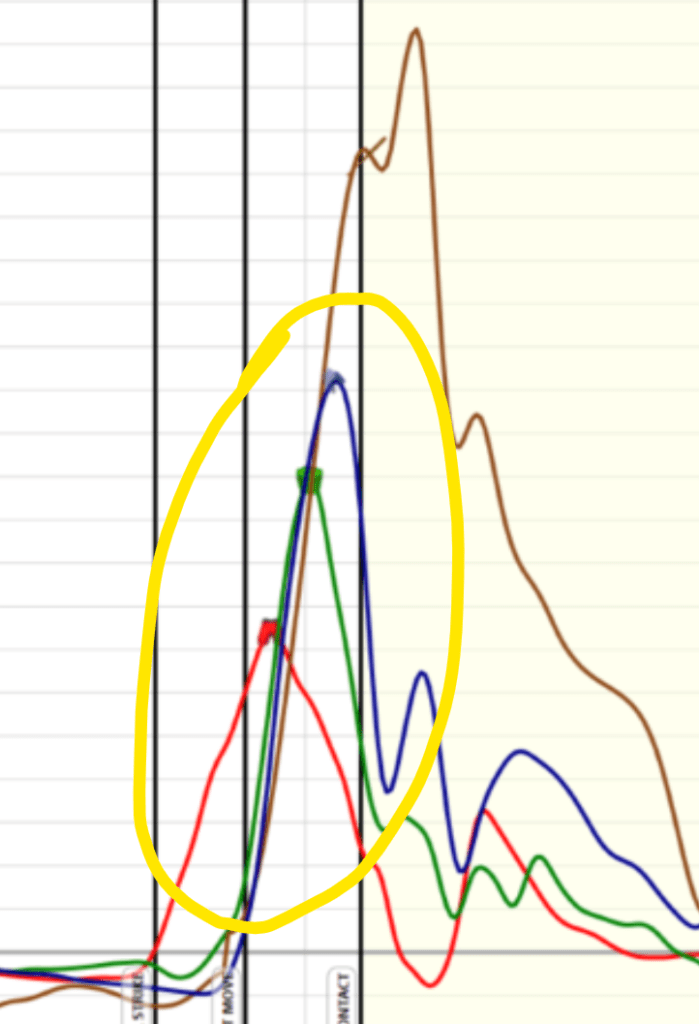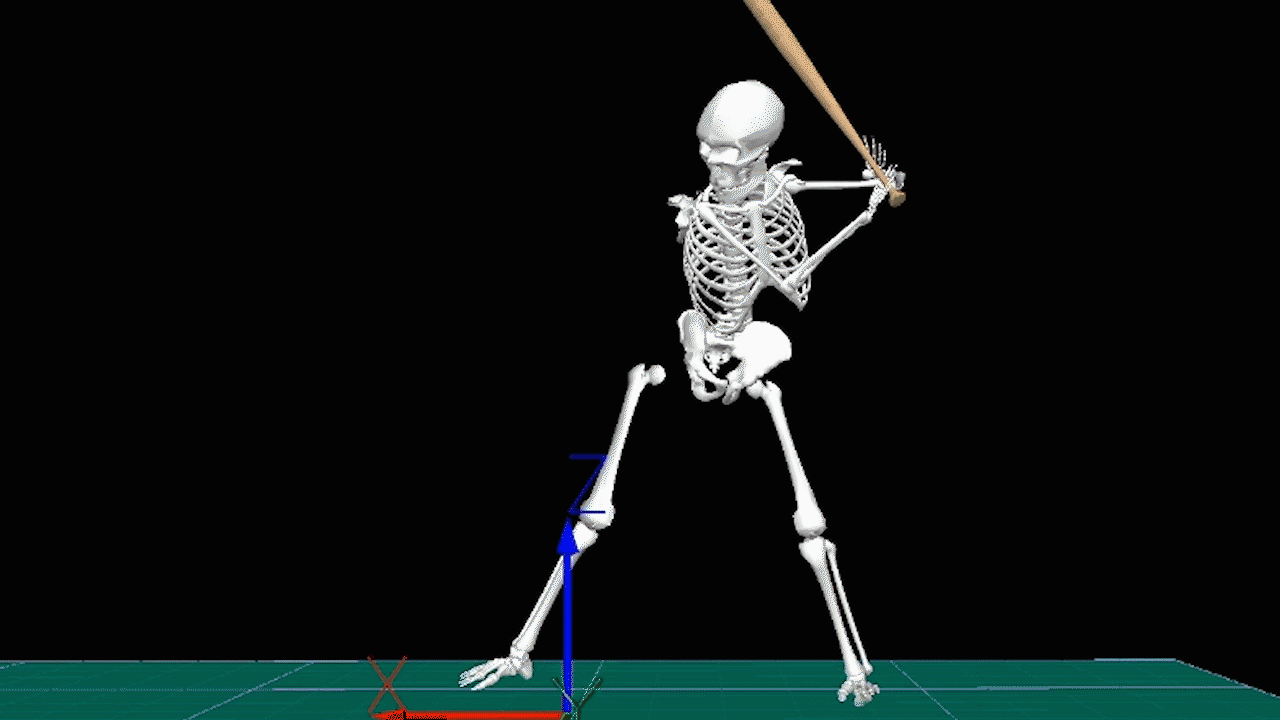Case Study: How a defense-first pro catcher transformed his game at the plate and behind it

As a former Division 1 athlete and high draft pick, Maverick was already an extremely talented baseball player. However, after his second season of professional baseball was cancelled due to COVID-19, the former Pac-12 Co-Defensive player of the year decided he wanted to improve his game on the other side of the ball. So Maverick came into Driveline to become a better hitter, and more specifically hit for more power on a consistent basis.
Here’s what we found out during the assessment
There were a few things that stood out during Maverick’s hitting assessment. First, we saw that his average bat speed was right around pro average, but he didn’t maintain those speeds in more game-like, challenging environments (e.g., mixed pitch machine, short box, and live at-bats). While he made pretty consistent contact, he was not hitting the ball hard enough, which makes sense given his bat speed numbers. Priority number one was going to be increasing output with bat speed and exit velocity. Fortunately, Maverick has above average bat-to-ball skills:

Become the Hitter You Want To Be
Train at Driveline
Increasing bat speed and exit velocity should be a little bit easier when a hitter has above average bat to ball skills. In Maverick’s case, we saw that cleaning up his bat path was the “low hanging fruit” that would help to increase his output. More specifically, we saw that his swing was pushy, his attack angle was too high, and his bat path was slightly uphill. Which meant that his best contact was happening far out front at high attack angles.
Long story short, the plan was to tighten his turn, flatten the path and move the bat faster.
Blast
Areas for improvement
- Bat speed: 72.17 mph
- Right around our pro average, but has room for improvement with below average hand speed
- 90th percentile bat speed: 74.91 mph
- We want this number closer to 80 mph
- Peak hand speed: 20.75
- Increasing this will be a focal point to ultimately increase bat speed
- Average attack angle: 19.26°
- Too high, looking to lower this into the 10-12° range
Batted Ball Data
Areas for improvement
- Max exit velocity: 99.47 mph
- ~3 mph lower than Affiliate average
- Top 8th EV: 96.8 mph
- ~3mph lower than Affiliate average
- Point of contact:
- Due to his bat path, most of his contact had to be made further out front.
- With the pushy/vertical bat path, this led to lots of rollovers and top spun line drives to left field as well as slicing pop ups to the right side of the field.
- See video below:
K-Vest / Biomechanics
Areas for improvement
- The majority of his swings showed a similar kinematic sequence.
- While his 1234 sequence % was generally fine, his hands would get disconnected from his body leading to the “push” you see early on in his swing
- This forces early torso side bend and causes the extreme vertical bat path that only makes quality contact further in front of the plate at higher attack angles
- The focus was going to be “tightening the turn” and staying more connected throughout the swing.
- This should help flatten out his bat path and allow for more productive contact deeper in the zone.


Training Plan
Maverick’s training plan was geared towards doing these things:
- Getting strong and fast
- With roughly six months until competition, we had plenty of time to run through periodization programming in the weight room
- He went through accumulation and strength phases prior to fall instructs (which was unexpected) and followed with strength and power phases building up to spring training.
- Moving the bat faster
- Hitting the ball harder
- Tightening up mechanics
- Flattening bat path
- Maintaining bat to ball skills
To start, he was going heavy overload bat speed training 3-4 times per week in accumulation phases which progressed to less volume and more underload and higher intensity swings towards the end of strength and into power phases. The hitting programming in between was a combination of training to improve smash factor and improving his bat path with a ton of hitting Plyo Ball ®. Below is a screenshot of some of his programming inside of TRAQ
While doing all of this, it is extremely important to “heat check” the changes you are making. We want to make sure that these adjustments hold up in more competitive environments. So Maverick spent a ton of time hitting on the machine facing high velocity, nasty breaking balls, Ipitch mixed pitch sequences, and catching barrels in live at bats.
Results
Blast
Here is a swing profile report from Jan. 20 – Jan. 26 (right before leaving for spring training)
Swing profile report from Jan. 20 – Jan. 26 (right before leaving for spring training)
What got better?
- Average bat speed: 75.14 mph (+2.97 mph)
- 90th percentile bat speed: 78.38 mph (+3.47 mph)
- Average attack angle: 10.48° (-8.78°)
- Attack angle range: 75.93% (+49.93%)
- Peak hand speed: 21.63 (+0.88)
Batted Ball Data
Improvements
- Max exit velocity: 104.19 mph (+4.72 mph)
- Top 8th exit velocity: 101.1 mph (+4.3 mph)
- Average exit velocity: 89.6 mph (+0.6 mph)
- Point of contact:
- Much more consistent quality contact deeper in the zone, which shows bat path improvements.
While all of his output metrics, specifically bat speed and exit velocity, increased, we also saw an improvement in his bat-to-ball skills. Shown by a three percent improvement in his smash factor + grade
Smash factor + grade from his last week in gym prior to Spring Training
K-Vest


The improvements in Maverick’s K-Vest data show a much tighter and more “connected” swing.
Which makes sense when looking back to his increased speeds from his blast data as well as harder hit balls, his deeper average point of contact and improved smash factor seen in his batted ball data.
Just for fun, let’s take a look at his first day vs. last day session report.
It is glaringly obvious that moving more efficiently at higher speeds works. It will make you a better hitter. These things are very much attainable with the right training plan, if you are willing to put in the work.
It is important to note that all of this data was tracked in game-like, challenging environments. Maverick loved setting up the Ipitch machine to take at bats 3-4 times per week against the random sequence setting with 95 mph fastballs, 90 mph sliders, 90 mph cutters and 85 mph change ups.
Shoutout to Maverick Handley for putting in work this offseason!
Extra Extra
When Maverick looked into working at Driveline, he found out he could get catching work in the facility to go along with hitting training. Being a touted defensive catcher already, he planned on getting some time off the machine and live arms in the building. However, after assessing and going over his strengths and areas we felt he could improve, he wanted more. He wanted to dominate every zone and learn about some different positions that might help him do so. He also knew what would help him or any other player on the field for that matter – velocity.

Foundations of Hitting
30 modules teaching you everything we know about hitting and hitting mechanics.
Main Goals
- Throw harder – Maverick came in having picked off seven and thrown out 10 of 26 runners in his final season at Stanford, and 11 of 19 in his first professional season. He attributed his throwing success on the exchange and accuracy. He felt he needed to add velocity, though, and maintain his quickness and accuracy.
- Win the low pitch more often – It was apparent that Maverick had “soft hands” and stuck it well during his assessment. His strengths were on the edges but the low pitch was something that we needed to spend more time on. He had also always caught out of a traditional stance so we wanted to introduce some new setups.
After on-ramping to throwing weighted balls, Maverick moved into a velocity phase. He executed on this program for about a month before getting called to the fall instructional league.
He’s already gotten the chance to show it off a few times this year, including his first from the one knee position.
One of the most overlooked aspects to our throwing program is arm fitness. Our programs are designed to get our athletes ready for the season and to maintain strength and health during the season.
On the receiving side, the big focus was the low pitch. His strengths were on the edges but the low pitch was an area we felt he could get better. This was something we saw early during live ABs and off the machine, and confirmed with Maverick as an area he’d like to improve.
One of the first things we experimented with was his pre-pitch glove movement. We added a quarter turn and pre-set the glove slightly lower. His pattern was to relax the arm UP and back into the body. Maverick worked to have his give (back into the body) stay low. This allowed him to attack upward through the ball instead of having downward reach into the ball.
We also over-emphasized the low pitch by catching from elevation. We worked on working beneath pitches that were very much lower than he’d ever frame in a game. But this made the actual low pitch much easier to control.
The dedicated training time that Maverick put in towards improving his defensive skills speaks to his character and his drive to be great. It would have been pretty easy, as an awarded and touted defensive catcher, to just wait until spring training to start catching. But, after sitting down and seeing some areas that he could improve to get to where he wanted to be, Maverick dove right in. It was special to see him earn an opportunity to catch in his first big league spring training game this year. We think there’s more to come for him.
TRAIN AT DRIVELINE
Interested in training with us? In-gym and remote options are both available.
- Athlete Questionnaire: Fill out with this link
- Email: [email protected]
- Phone: 425-523-4030
Written by
Written by Tanner Stokey (Hitting Coordinator) and Maxx Garrett (Catching Coordinator and Hitting Trainer)
Comment section